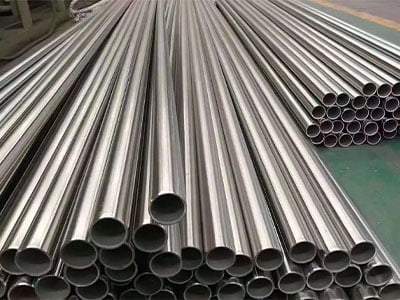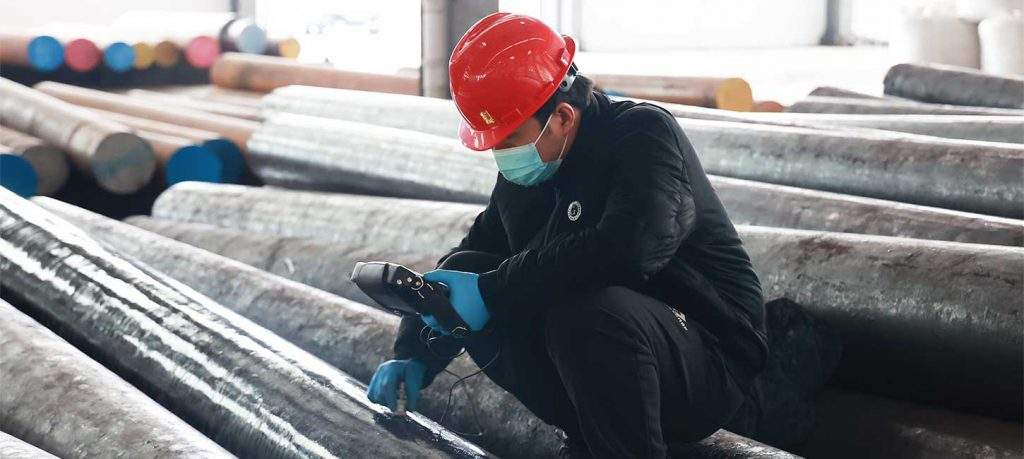Introduction
D2 tool steel is a high-carbon, high-chromium tool steel known for its exceptional hardness and wear resistance. Widely used in various industrial applications, D2 tool steel is particularly valued for its durability and ability to retain a sharp edge. This blog post delves into the composition of D2 tool steel, its benefits, and its applications. We’ll explore its unique properties and answer some frequently asked questions to give you a comprehensive understanding of this versatile material.
What is D2 Tool Steel?

D2 tool steel is classified as a high-carbon, high-chromium tool steel. It contains significant amounts of carbon and chromium, which contribute to its hardness and corrosion resistance. Below is a detailed breakdown of the typical composition of D2 tool steel:
| Element | Composition (%) |
|---|---|
| Carbon | 1.40-1.60 |
| Chromium | 11.00-13.00 |
| Molybdenum | 0.70-1.20 |
| Vanadium | 0.10-0.30 |
| Manganese | 0.60 |
| Silicon | 0.60 |
The high carbon content in D2 tool steel provides the hardness and strength, while the chromium offers corrosion resistance. Molybdenum and vanadium improve the steel’s toughness and wear resistance, making it suitable for demanding applications.
Benefits of D2 Tool Steel
Superior Wear Resistance
One of the most significant benefits of D2 tool steel is its exceptional wear resistance. This property is crucial for tools and components subjected to abrasive materials or high-friction environments. The high chromium content in D2 tool steel forms hard carbides during heat treatment. These carbides enhance wear resistance by providing a tough, wear-resistant matrix. This means that tools made from D2 tool steel can withstand continuous use and maintain their functionality over time, reducing the frequency of replacements and downtime.
High Hardness
D2 tool steel can be heat treated to achieve high levels of hardness, making it ideal for cutting and forming applications where maintaining a sharp edge is critical. The high carbon content in D2 tool steel is a key factor in achieving this hardness. When heat treated, D2 tool steel can reach a Rockwell hardness of up to 62 HRC. This high hardness level ensures that tools and components retain their cutting edges and resist deformation under stress, making D2 tool steel suitable for manufacturing dies, punches, and cutting tools used in heavy-duty operations.
Corrosion Resistance
Although not classified as stainless steel, D2 tool steel offers better corrosion resistance than many other tool steels. The chromium content in D2 tool steel forms a passive oxide layer on the surface, providing some protection against rust and oxidation. This makes D2 tool steel suitable for environments where the tool might be exposed to moisture or other corrosive elements. While it is not as corrosion-resistant as stainless steels, D2 tool steel’s ability to resist rust and oxidation extends its service life in less than ideal conditions.
Dimensional Stability
D2 tool steel exhibits excellent dimensional stability during heat treatment, meaning it experiences minimal distortion or warping. This is crucial for precision tools and components that must maintain tight tolerances. Dimensional stability ensures that parts fit correctly and function as intended after heat treatment. This property is particularly important in the manufacturing of molds, dies, and other components where precision is critical. The stability of D2 tool steel means that it can undergo multiple heat treatment cycles without significant changes in dimensions, ensuring consistent performance and reliability.
Versatility
The unique combination of hardness, wear resistance, and corrosion resistance makes D2 tool steel incredibly versatile. It is used in a wide range of applications, including:
- Cutting Tools: D2 tool steel is ideal for manufacturing knives, scissors, and industrial blades due to its ability to maintain a sharp edge and resist wear.
- Dies and Punches: In metalworking, D2 tool steel is used to produce dies and punches that can withstand the repeated stress and abrasion of stamping and forming operations.
- Industrial Knives: Industries such as paper, plastic, and food processing benefit from the durability and edge retention of D2 tool steel knives.
- Injection Molds: The dimensional stability and wear resistance of D2 tool steel make it suitable for creating precise and long-lasting injection molds for plastics.
- Shear Blades: Shear blades in the metalworking industry, which require cutting through tough materials repeatedly, rely on the effectiveness and durability of D2 tool steel.
Applications of D2 Tool Steel
Cutting Tools
D2 tool steel is widely used in the production of cutting tools, including knives, scissors, and industrial blades. Its ability to retain a sharp edge and resist wear makes it ideal for these applications.
Dies and Punches
In metalworking, D2 tool steel is used to manufacture dies and punches. The high hardness and wear resistance ensure that these tools can withstand the repeated stress and abrasion of stamping and forming operations.
Industrial Knives
Industrial knives used in paper, plastic, and food processing industries benefit from the durability and edge retention of D2 tool steel. These knives can maintain their sharpness and perform efficiently over extended periods.
Injection Molds
D2 tool steel is also employed in the production of injection molds for plastics. The material’s dimensional stability and resistance to wear and corrosion make it suitable for creating precise and long-lasting molds.
Shear Blades
Shear blades used in the metalworking industry are often made from D2 tool steel. The blades need to cut through tough materials repeatedly, and D2’s properties ensure they remain effective and durable.
Heat Treatment of D2 Tool Steel

Proper heat treatment is essential to achieve the desired properties in D2 tool steel. The process typically involves the following steps:
- Annealing: Heating the steel to around 1600°F (870°C) and then cooling it slowly to reduce hardness and improve machinability.
- Hardening: Heating the steel to a temperature of 1850-1950°F (1010-1065°C) and then quenching it in oil or air to harden the material.
- Tempering: Reheating the hardened steel to a temperature between 300-1000°F (150-540°C) to achieve the desired balance of hardness and toughness.
The exact temperatures and times for each step can vary depending on the specific requirements of the application.
D2 Tool Steel vs. Other Tool Steels
It’s helpful to compare D2 tool steel with other popular tool steels to understand its advantages and limitations.
| Property | D2 Tool Steel | A2 Tool Steel | O1 Tool Steel |
|---|---|---|---|
| Hardness | High | Moderate | High |
| Wear Resistance | Excellent | Good | Moderate |
| Corrosion Resistance | Good | Moderate | Low |
| Dimensional Stability | Excellent | Good | Moderate |
| Toughness | Moderate | High | High |
As seen in the table, D2 tool steel excels in hardness and wear resistance but may have lower toughness compared to other tool steels like A2 and O1. The choice of tool steel depends on the specific requirements of the application.
Conclusion:D2 tool steel composition
Understanding the composition and benefits of D2 tool steel is crucial for selecting the right material for your industrial applications. Its superior wear resistance, high hardness, and good corrosion resistance make it a popular choice for cutting tools, dies, and industrial knives. Proper heat treatment and maintenance ensure that D2 tool steel tools perform optimally and have a long service life. By comparing D2 with other tool steels, you can make informed decisions about the best material for your needs.
FAQs
What is the main difference between D2 tool steel and stainless steel?
D2 tool steel is not classified as stainless steel, although it offers some corrosion resistance due to its chromium content. Stainless steels typically contain higher chromium levels (around 18%) and are more resistant to corrosion. D2 tool steel is designed for high hardness and wear resistance, making it suitable for cutting tools and dies, whereas stainless steels are often used in applications requiring high corrosion resistance.
Can D2 tool steel be welded?
Welding D2 tool steel can be challenging due to its high carbon and chromium content, which can lead to cracking and other issues. Preheating the material and using appropriate welding techniques can mitigate some of these challenges. It’s generally recommended to consult with a welding specialist for specific guidance on welding D2 tool steel.
How do I maintain tools made from D2 tool steel?
Proper maintenance of D2 tool steel tools involves regular cleaning to remove debris and prevent rust. Applying a light coat of oil can help protect the surface from moisture. Sharpening tools as needed will also ensure they remain effective and perform well.
Is D2 tool steel suitable for kitchen knives?
D2 tool steel can be used for kitchen knives, particularly for those requiring high edge retention and wear resistance. However, it is not as corrosion-resistant as some other materials used for kitchen knives, such as stainless steel. Proper care and maintenance, including keeping the knife dry and clean, are essential to prevent rust and corrosion.
What are some common alternatives to D2 tool steel?
Common alternatives to D2 tool steel include A2, O1, and M2 tool steels. Each of these has unique properties that may be better suited for specific applications. For example, A2 tool steel offers higher toughness, while M2 tool steel provides excellent hardness and wear resistance.
